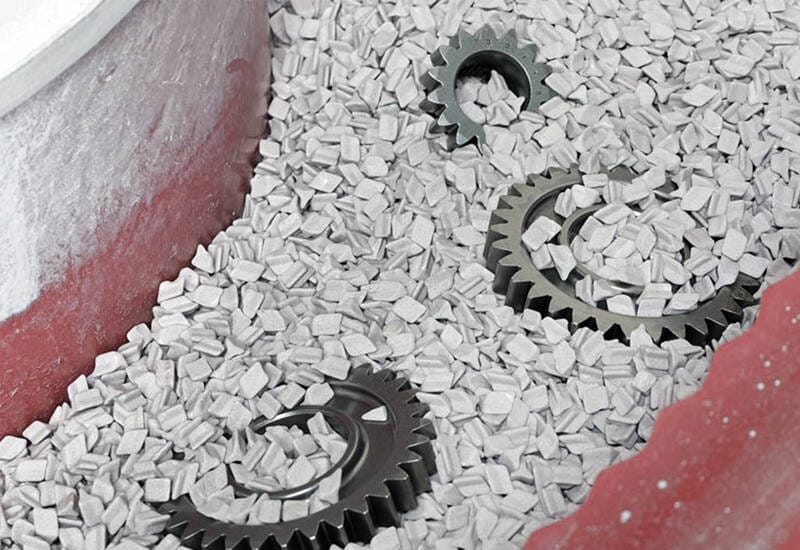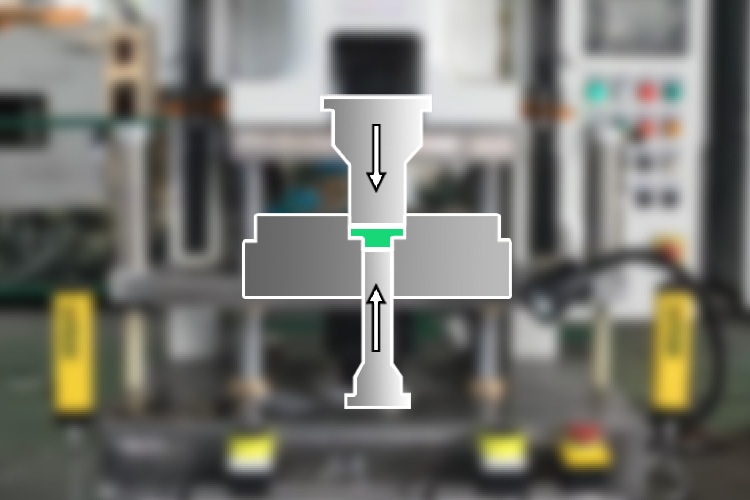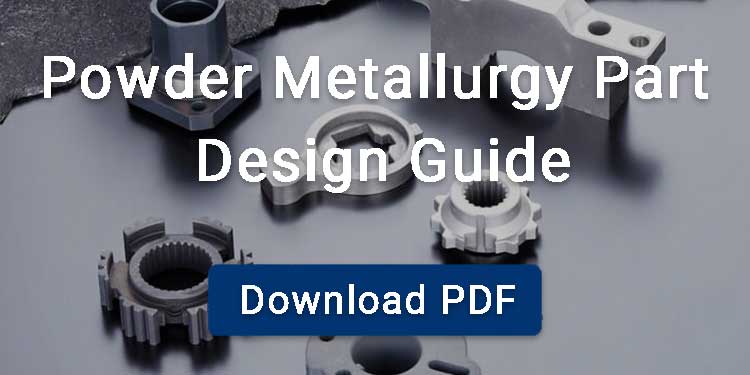Powder metallurgy parts are made by mixing metal powders with binders, then pressing and sintering. This process is cost-effective for mass-producing small, complex parts with tight tolerances.
To enhance both the performance and appearance of your powder metallurgy parts, manufacturers typically subject them to surface treatments.

Contents
Deburring
Burrs and flash on the surface of powder metallurgy components are caused by gaps between the upper punch, lower punch, core rod, and die during the compacting process.
Sandblasting
Sandblasting process can also reduce the roughness of powder metal parts. Sandblasters spraying silicon carbide, aluminum oxide or silicon oxide onto powder metal components with high-pressure air.
Tumbling
In tumbling, the sintered metal products and the ground media are put into the machine and vibrated. This can remove burrs, flashes and reduce the surface roughness of the powder metal components.
The tumbling equipment is a donut-shaped drum in which sintered metal parts and grinding media are placed. The drum rotates in a circular motion while vibrating, causing the grinding media and the powder parts to rub against each other, removing burrs and reducing surface roughness.
Tumbling process also helps improve the corrosion resistance of sintered stainless steel parts by sealing some of the pores.

Plating
Plating is the process of coating a thin layer of metal, such as nickel or zinc, on your parts by electrolysis or chemical reduction.
Common electroplating methods for sintered parts include: zinc plating, nickel plating and chrome plating.
Plating Process of Powder Metallurgy Parts
- Degreasing by baking: Heat the powder metal parts in an oven at 200 to 300°C for about 1 hour to evaporate the oil in the pores.
- Sealing: Place the sintered parts in a crucible containing molten zinc stearate (135-180℃), evacuate the crucible, and immerse it in the pores of the parts.
- Degreasing: Use a low-alkaline degreasing solution to remove the zinc stearate remaining on the surface of the workpiece.
- Acid etching: Soak the workpiece in a 50-100 mL/L hydrochloric acid solution at room temperature for 30 to 60 seconds.
- Electroplating: Use a nearly neutral solution for electroplating.
- Cleaning: Use ultrasonic waves for cold water cleaning and hot water cleaning.
- Drying: Dry the sintered metal parts at a high temperature of 100℃.
Dacromet
Dacromet is a new type of green surface treatment technology. It is an anti-corrosion coating with zinc powder, aluminum powder, chromic acid and deionized water as the main components.
- Dacromet coating has good high temperature resistance, up to 300°C, while galvanizing is only 100°C
- During the entire process of production and parts coating, Dacromet does not produce wastewater and exhaust gas that is harmful to the environment.
- Dacromet coating has excellent corrosion resistance
- Dacromet coating has good bonding with the metal substrate and has strong adhesion with other additional coatings.
Sizing
- Sizing process is one of the secondary operations performed after sintering that re-presses powder metallurgy parts. It not only enhances the dimensional accuracy of sintered parts but also improves the surface finish.
- What’s more, Sizing helps seal the surface of powder metal parts, especially oil-impregnated bushings, reducing oil leakage.

Stream Treatment
Stream treatment, also known as blackening, is a common surface treatment process for powder metal iron-based parts.
In this process, manufacturers place your workpiece in a heating furnace and pass high-temperature steam, usually between 510°C and 570°C, through it. The steam reacts with the part, forming an oxide layer known as ferroferric oxide.
Blackening is an economical surface treatment process with the following advantages:
- It improves the hardness of sintered iron-based parts, and the surface hardness can reach above 40HRC.
- The protective oxide layer generated by blackening improves the corrosion resistance of the parts.
- Stream treated iron-base parts have a consistent black appearance, which improves the appearance quality.

Phosphate Treatment
Phosphate treatment is a chemical reaction of iron-based parts in a salt solution, forming a phosphate coating on the surface. The phosphate generated by this process adheres tightly to the surface of your sintered parts, improving both corrosion and wear resistance.
Heat Treatment
Here are some common heat treatment processes for sintered parts.
Induction hardening
Induction hardening is a local surface hardening method that can obtain a hardened layer of several millimeters much deeper than general surface treatment.
This is more suitable for parts that require toughness and are locally subjected to high loads. Transmission synchronizer bushings, powder metal gears.
Laser hardening
Compared with induction hardening, laser hardening is also used for powder metallurgy parts, which can select positions more accurately and produce smaller deformations.
Carburizing
Carburizing is a heat treatment process that hardens the surface of steel or iron-based powder metallurgy parts. In this process, manufacturers heat your sintered metal part in a carbon-rich environment, causing carbon atoms to diffuse into the surface. This forms a carbide layer that increases surface hardness and wear resistance. Carburizing process is ideal for powder metal gears, which need a hard, wear-resistant surface while maintaining core ductility.
If you have any need a powder metallurgy solution, our team is here to help.
BLUE is your trusted powder metallurgy company with 20 years of experience and ISO 9001:2015 certification. We offer a wide range of standard PM parts without mold fees.
Browse our SHOP to find the perfect match, or contact us for custom solutions tailored to your requirements.



